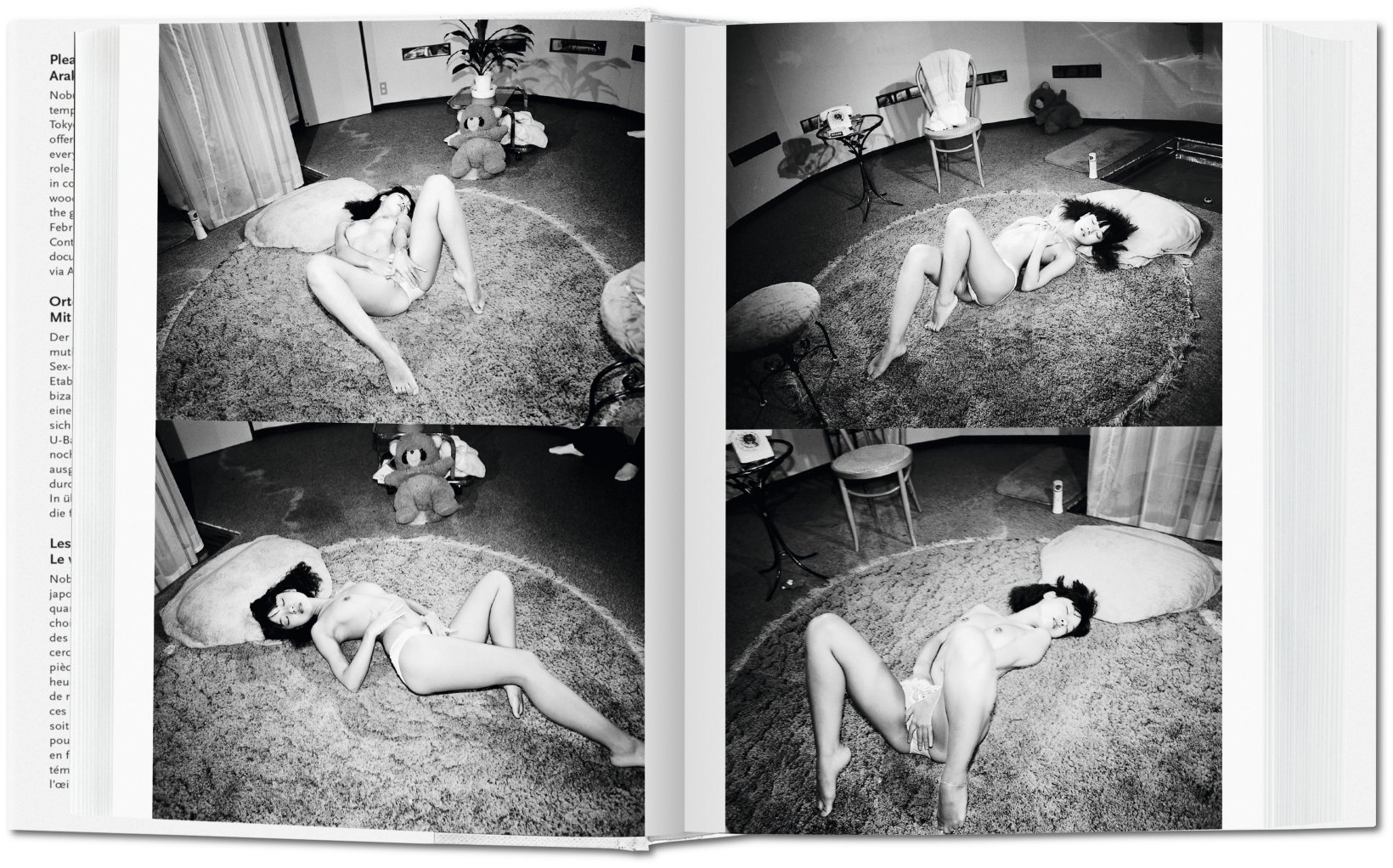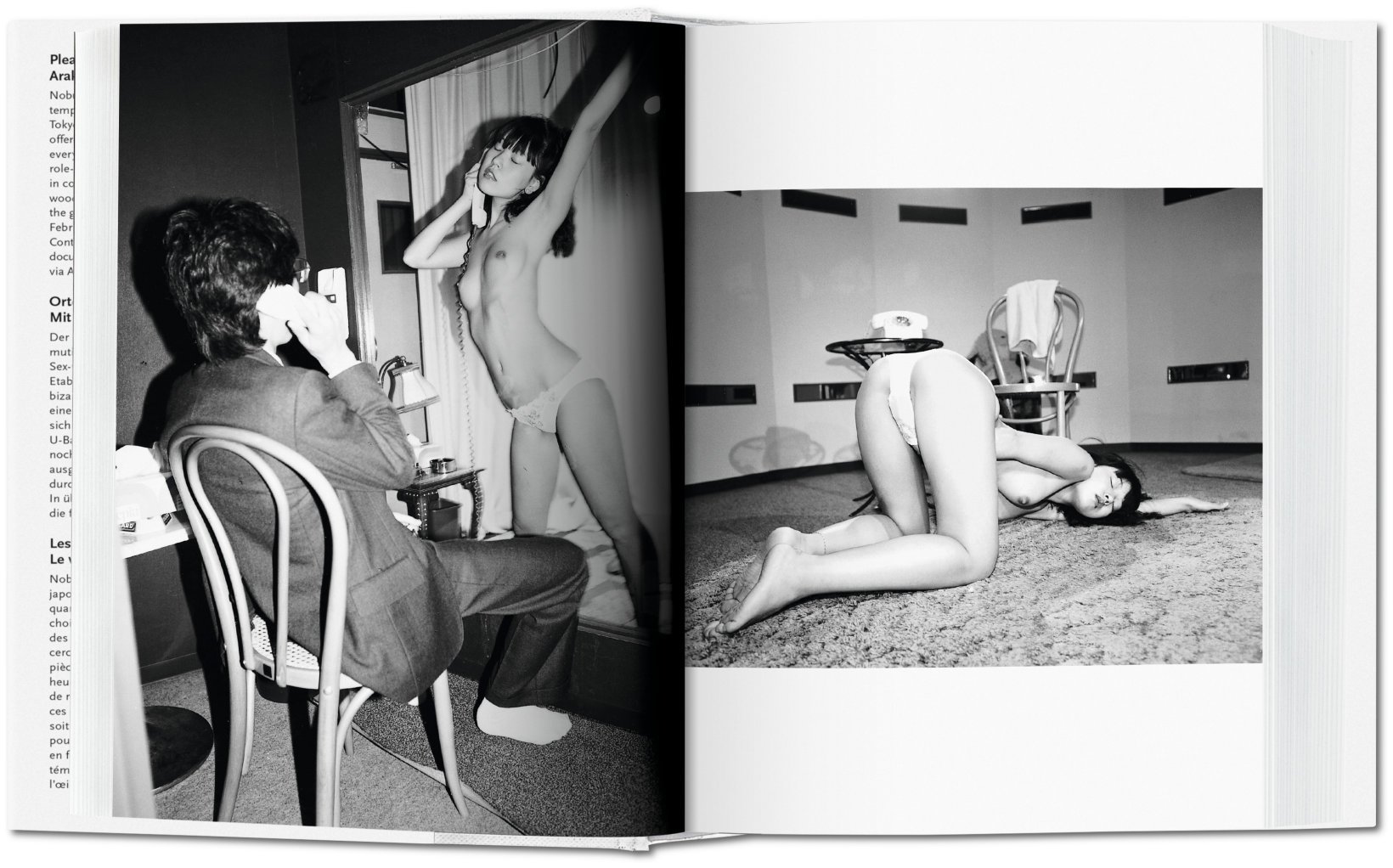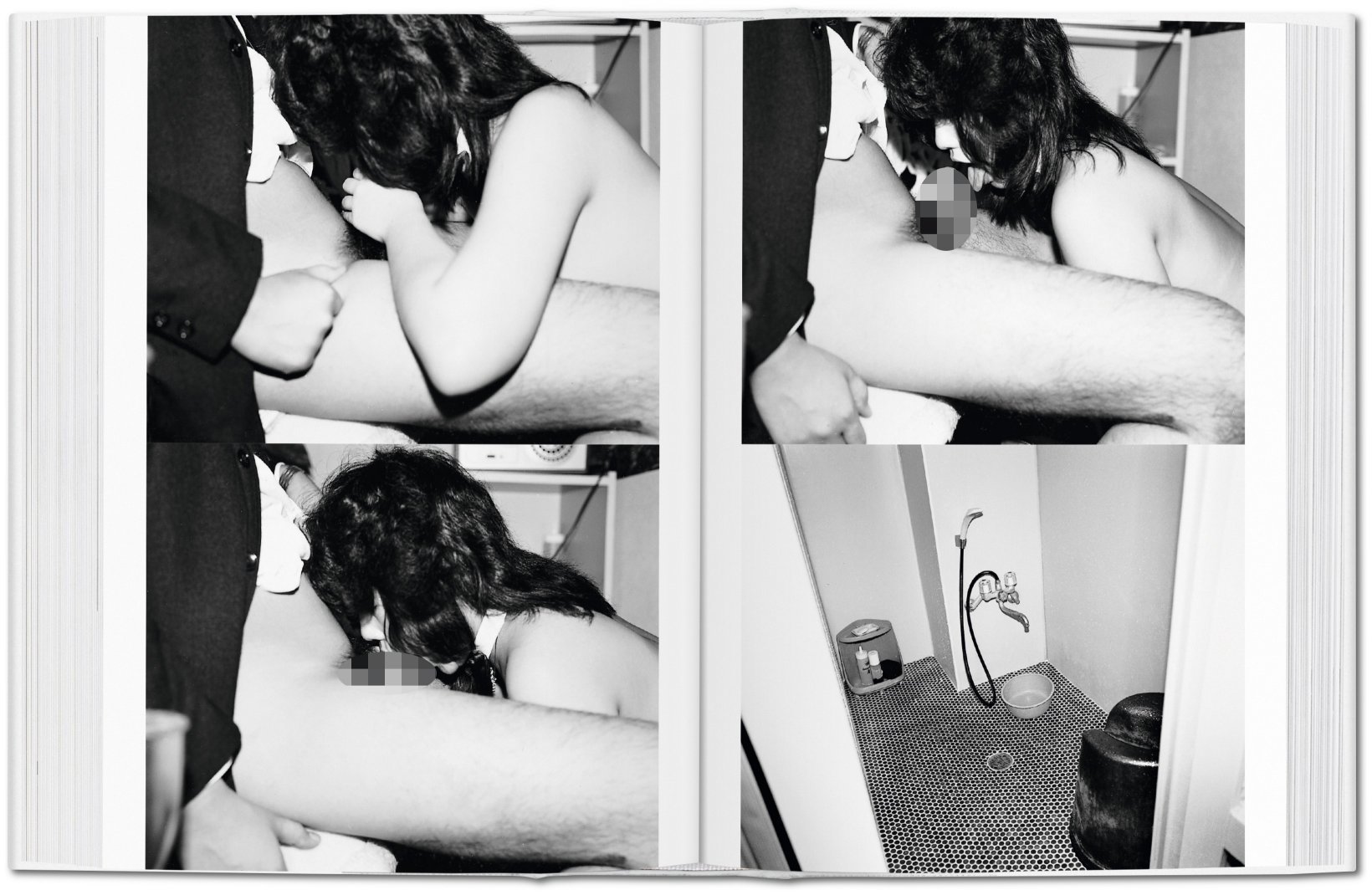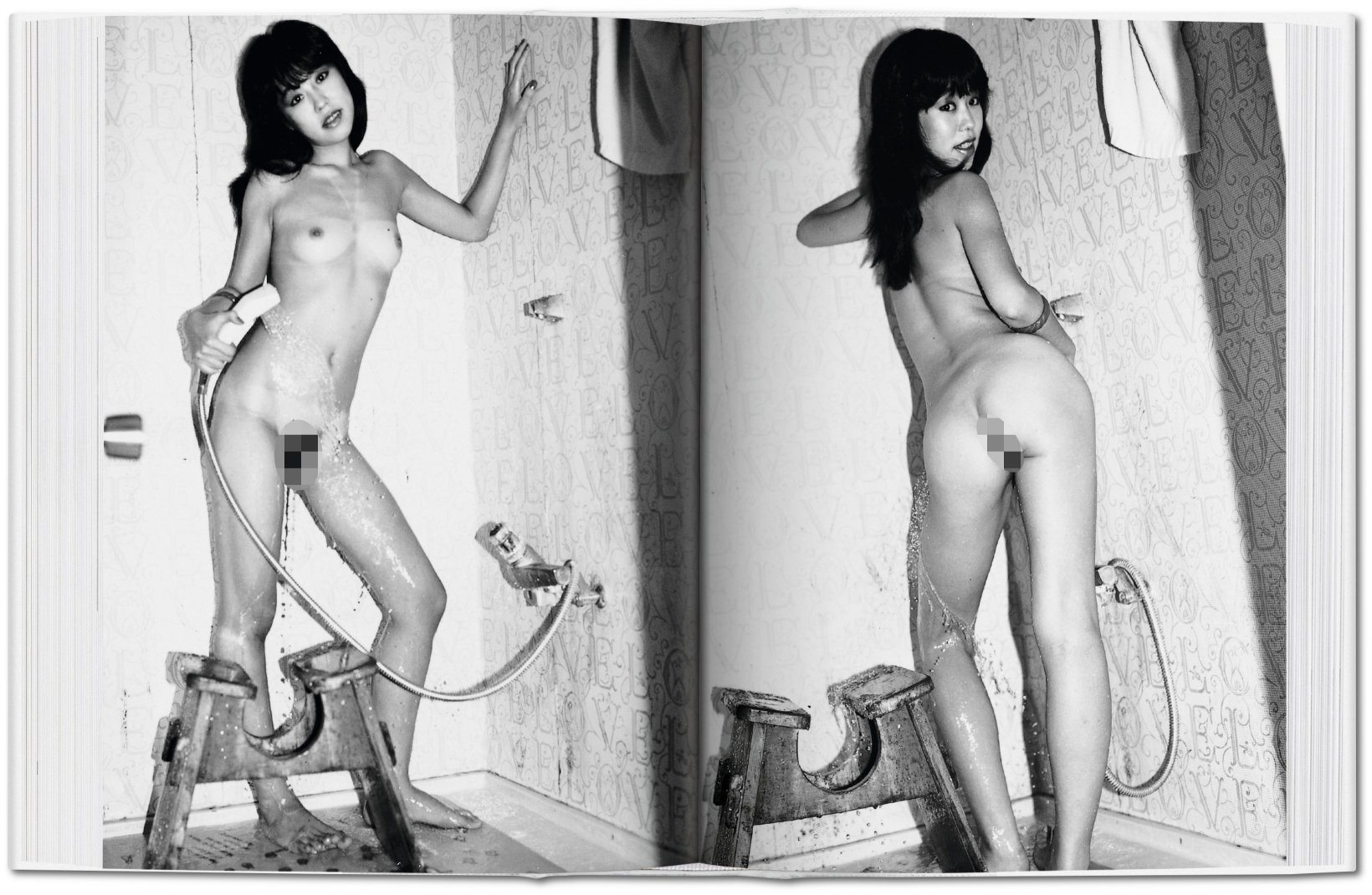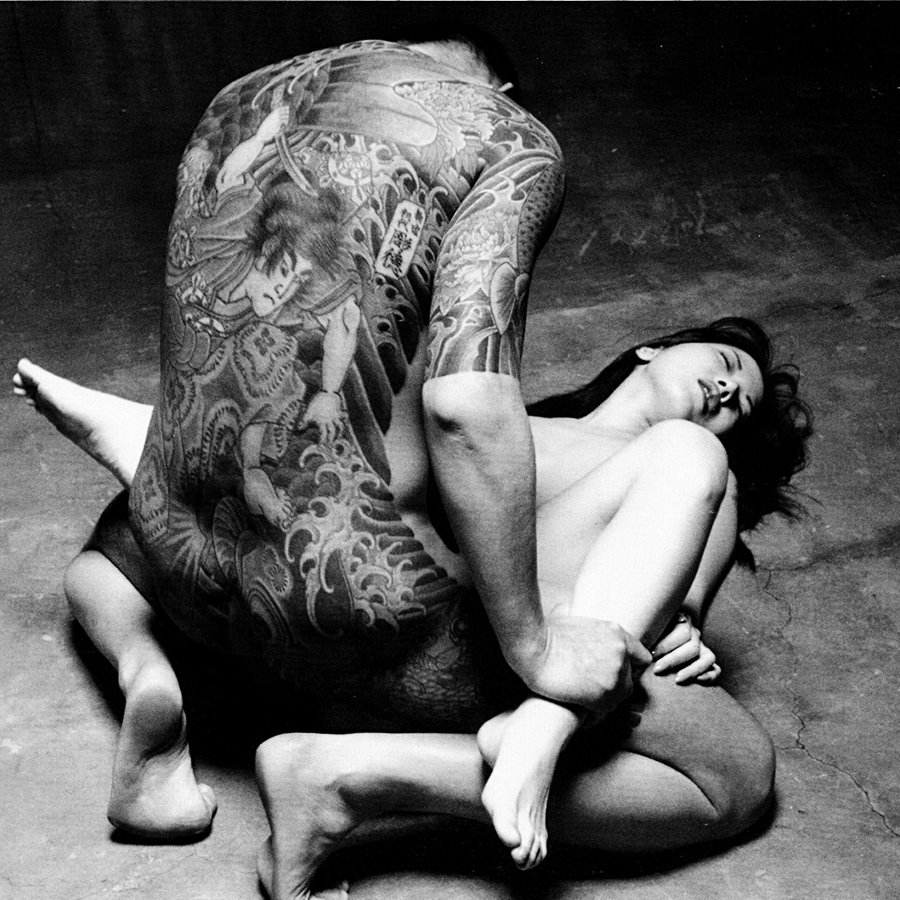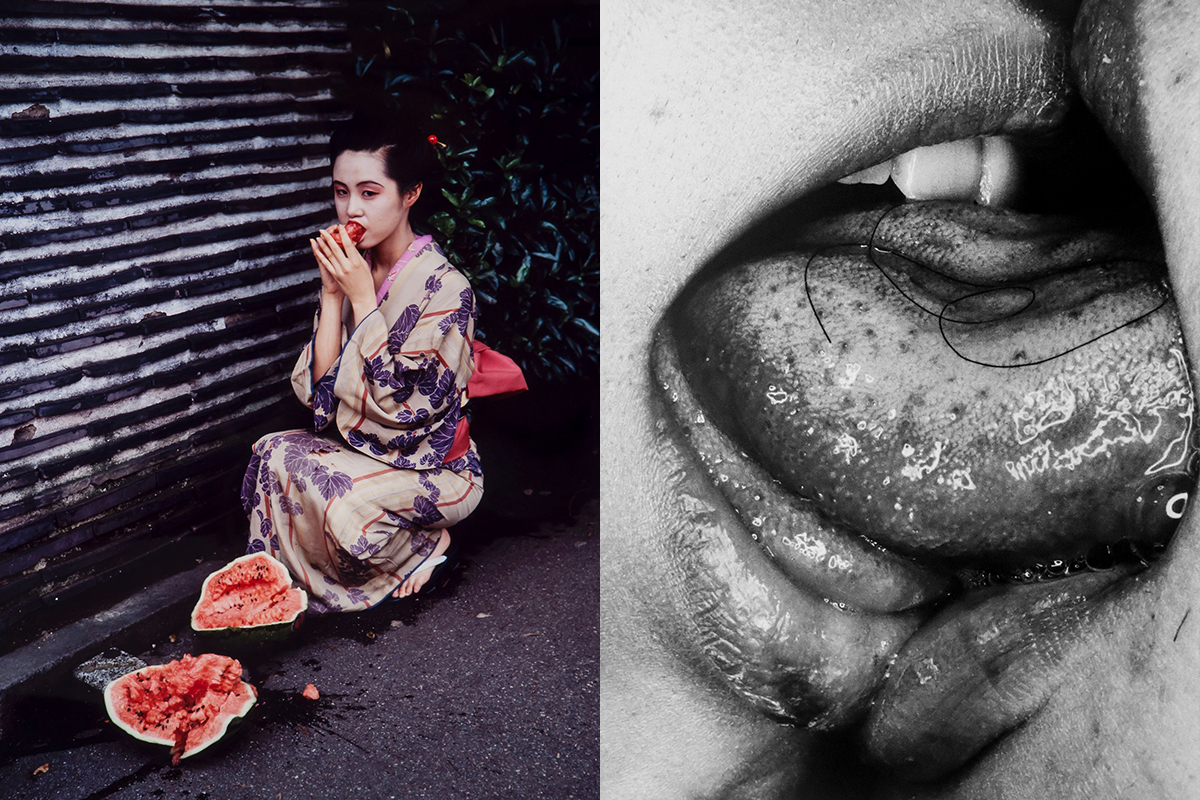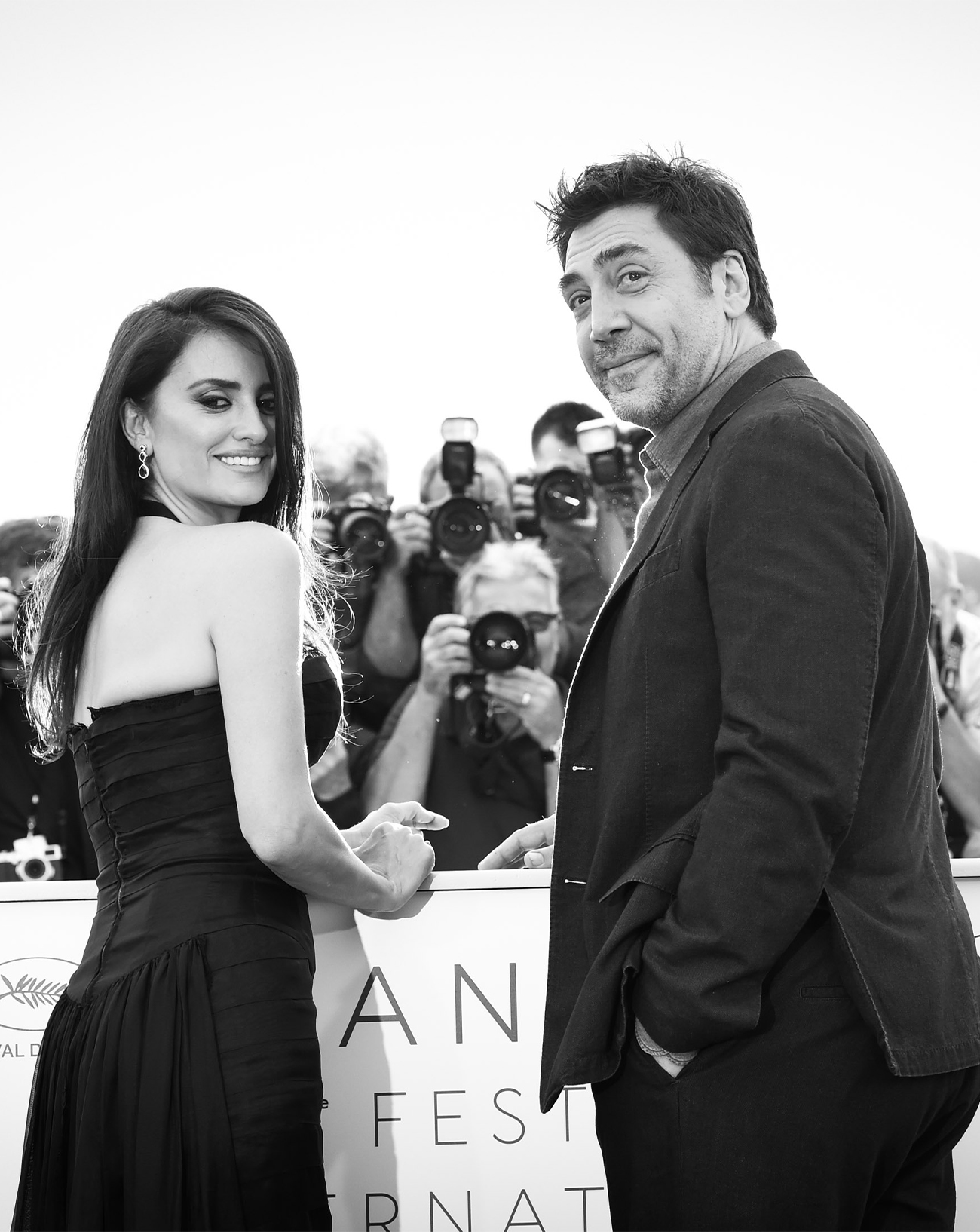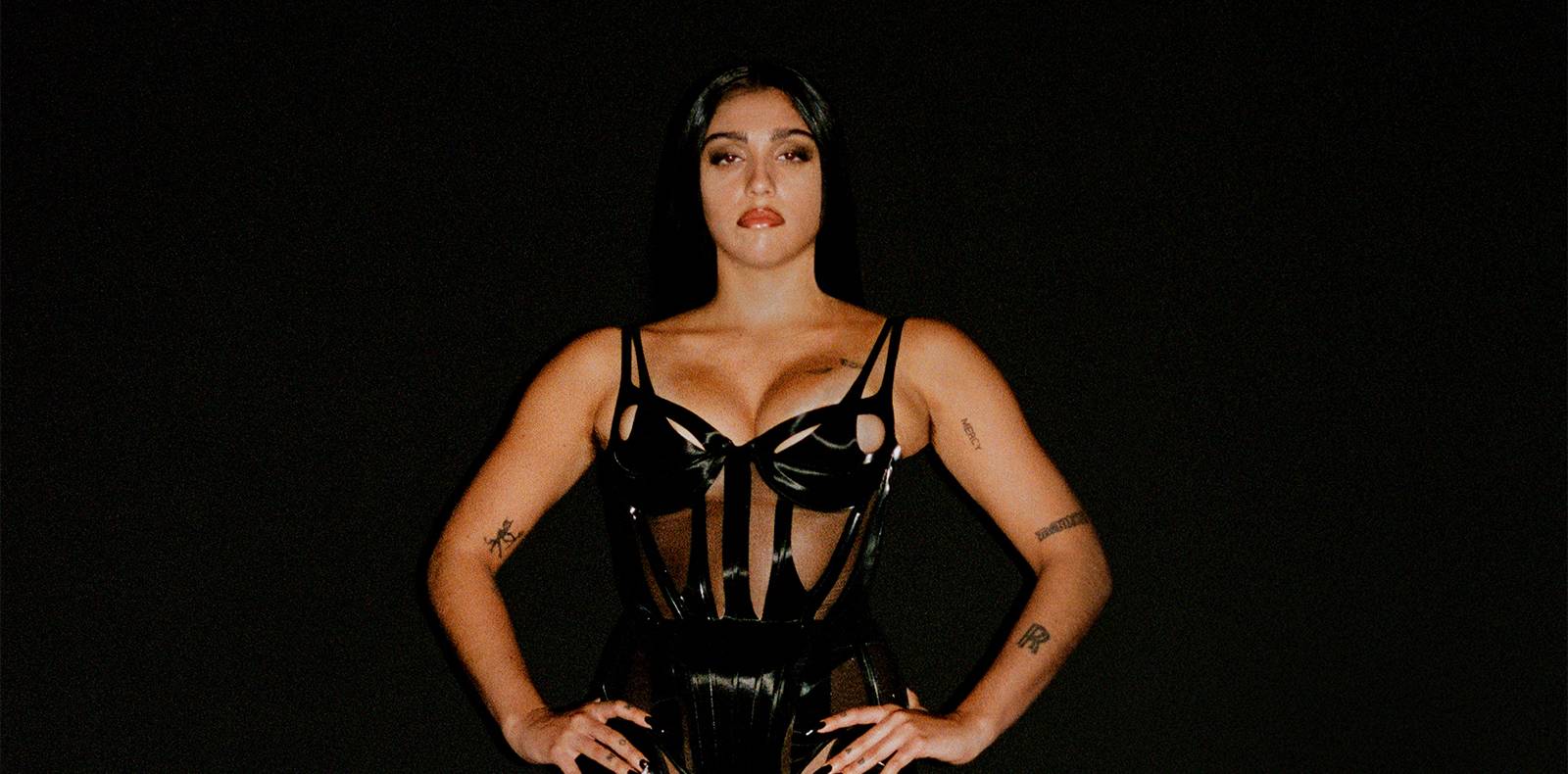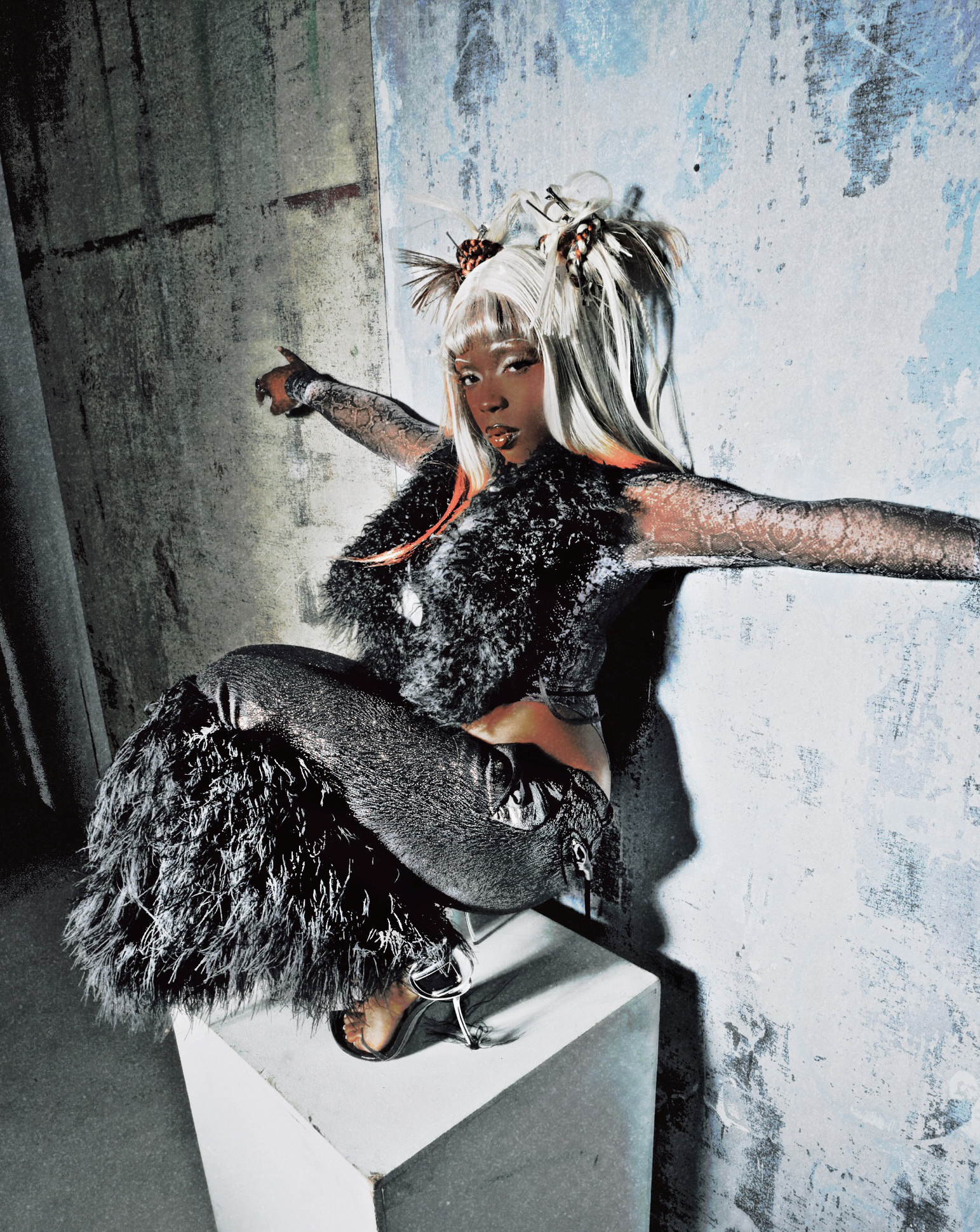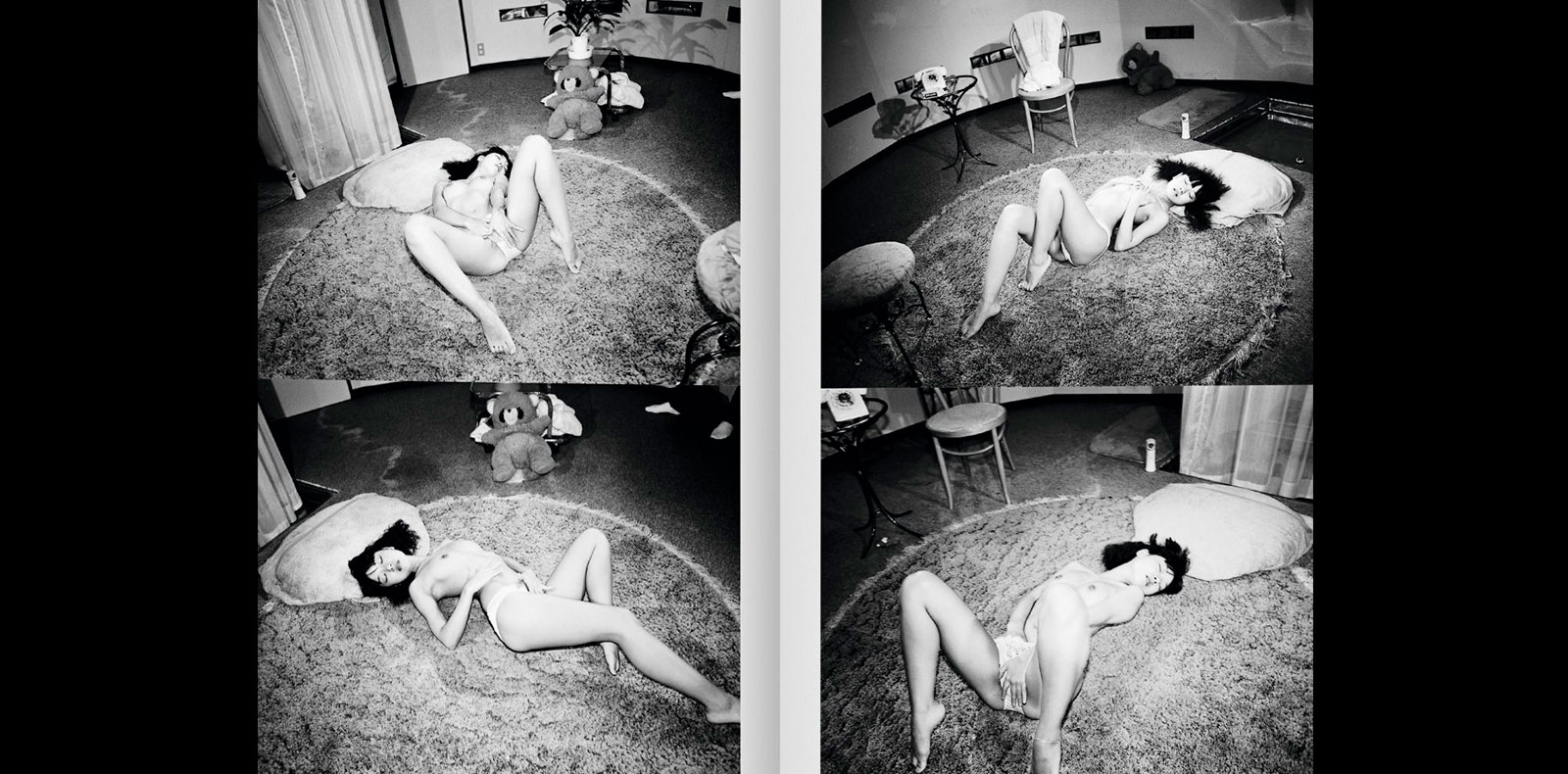
4
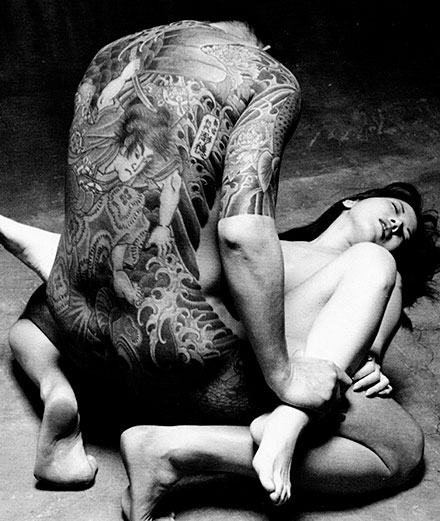
4
Nobuyoshi Araki: “cafes without panties” reporter
A manifesto of eroticism for some, a collection of pornography for others, the book “Tokyo Lucky Hole” condenses the politically incorrect fantasies of photographer Nobuyoshi Araki. In the absence of idealistic nudes, the Japanese artist probes Tokyo’s “entertainment centers” from the 1980s, between blurry blowjobs and ecstatic lolitas.
By Alexis Thibault.
Men in dark suits scrutinise the floor of the bar they’ve walked into. All of them are Japanese. Their lascivious gazes are glued to the ground because it is mirrored to reflect the private parts of the mini-skirted waitresses who wear no underwear… In the early eighties, these no-pan kissa – literally translating as “cafes without panties” – sprang up all over Tokyo. Here the camera films the sex of the employees with gusts from ventilators occasionally lifting their skirts, satisfying the clientele stimulated by mere suggestion. Opened in 1978, Johnny in Kyoto led the dance along with the Lucky Hole, one of Tokyo’s most popular venues. But in these bars which function as an outlet, all touching was prohibited. For anything else, they had to pay. It was disembodied masturbation and anonymous fellatio a-go-go in the pink salons that offered a variety of services until the New Amusement Business Control and Improvement Act started regulating these practices in February of 1985.
A hero of Japanese counter-culture, Nobuyoshi Araki scoured the bars, the strip clubs, met with geishas and prostitutes, collaborated with S&M magazines and encouraged ever more suggestive poses. With a tongue on a blurry penis or a vagina devoured by a mosaic, like a smouldering travel diary, Tokyo Lucky Hole condenses the photographer’s fantasies in 800 shots. A regular at these subversive establishments, Araki had time to immortalise the lolitas and their cries of extasy, the eyes of the voyeurs rolling back and the libertarian spirit of a bygone era. A sublime erotic repertoire for some, a repulsive portfolio of pornography for others, the images in Tokyo Lucky Hole remain the pinnacle of the Japanese photographer’s most crude period.
In love with many women, but enamoured only with one, in 1971 he published Sentimental Journey, the story of his honeymoon with Aoki Yoko. After a serious illness, his muse passed away in 1990. Araki’s photography subsequently adopted a more somber filter.
Born in Tokyo in 1940, Nobuyoshi Araki studied photography at Chiba University and graduated in 1963. A freelance photographer, he joined the Dentsu advertising agency as a cameraman and made his first film, Children in Apartment Blocks, in 1963. Inspired by Italian neo-realism, the cinematographic movement that documented daily life and focused on the collective, this film led to a series of photographs a year later entitled Satchin, which won him his first art prize. From then on, the post-war photographer explored the specifics of each medium: polaroid, collage, painting and cinema.
Along his lewd journey, Araki talks about each one of his many encounters. In love with many women, but enamoured only with one, in 1971 he published Sentimental Journey, the story of his honeymoon with Aoki Yoko. After a serious illness, his muse passed away in 1990. Araki’s photography subsequently adopted a more somber filter: Winter Journey is a dark and nostalgic tribute. Responsible for the visuals of Bjork’s 1996 remix album Telegram, Nobuyoshi Araki also delivered a series of polaroids of Lady Gaga in 2009. Following the loss of vision in his right eye, he humorously published Love on the left eye, a tribute to Love on the left Bank by Ed van der Elsken who he always admired.
Tokyo Lucky Hole by Nobuyoshi Araki, TASCHEN. Available.






